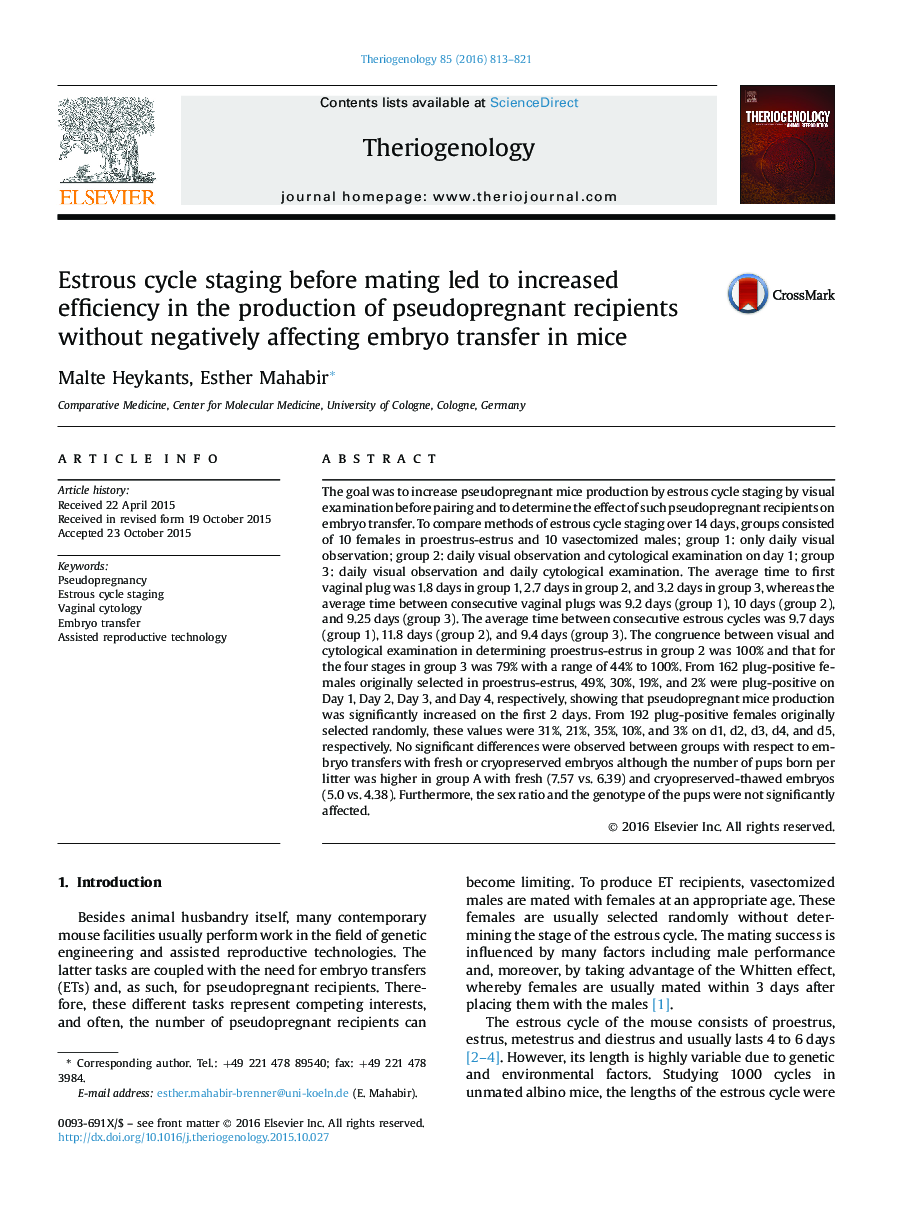| Article ID | Journal | Published Year | Pages | File Type |
|---|---|---|---|---|
| 2094894 | Theriogenology | 2016 | 9 Pages |
The goal was to increase pseudopregnant mice production by estrous cycle staging by visual examination before pairing and to determine the effect of such pseudopregnant recipients on embryo transfer. To compare methods of estrous cycle staging over 14 days, groups consisted of 10 females in proestrus-estrus and 10 vasectomized males; group 1: only daily visual observation; group 2: daily visual observation and cytological examination on day 1; group 3: daily visual observation and daily cytological examination. The average time to first vaginal plug was 1.8 days in group 1, 2.7 days in group 2, and 3.2 days in group 3, whereas the average time between consecutive vaginal plugs was 9.2 days (group 1), 10 days (group 2), and 9.25 days (group 3). The average time between consecutive estrous cycles was 9.7 days (group 1), 11.8 days (group 2), and 9.4 days (group 3). The congruence between visual and cytological examination in determining proestrus-estrus in group 2 was 100% and that for the four stages in group 3 was 79% with a range of 44% to 100%. From 162 plug-positive females originally selected in proestrus-estrus, 49%, 30%, 19%, and 2% were plug-positive on Day 1, Day 2, Day 3, and Day 4, respectively, showing that pseudopregnant mice production was significantly increased on the first 2 days. From 192 plug-positive females originally selected randomly, these values were 31%, 21%, 35%, 10%, and 3% on d1, d2, d3, d4, and d5, respectively. No significant differences were observed between groups with respect to embryo transfers with fresh or cryopreserved embryos although the number of pups born per litter was higher in group A with fresh (7.57 vs. 6.39) and cryopreserved-thawed embryos (5.0 vs. 4.38). Furthermore, the sex ratio and the genotype of the pups were not significantly affected.
